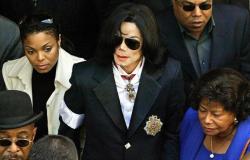When the legendary singer and songwriter Joni Mitchell made a surprise return to live performances at the Newport Folk Festival in 2022, represented the culmination of a long, cyclical journey since its initial appearance there in 1967. The circumstances surrounding the triumphant 2022 concert and its rhapsodic reception could not be more implausible. Mitchell78 years old at the time, had not performed live since 2000, and had maintained a strikingly low public profile since suffering a brain aneurysm in 2015. However, surrounded by a group of admirers, among whom were Brandi Carlile, Marcus Mumford and Wynonna Judd, Mitchell she played and sang with poise and energy, the same combination of miraculous talent and stark determination that first took her from the small Saskatchewan folk scene to the brink of global stardom all those decades ago. She closed her performance the same way she did on another Newport appearance in 1969, with a bravura version of her classic “The Circle Game”. What goes around comes around.
Or at least keep traveling. The title of the new and extraordinarily insightful overview of Ann Powers about the work of Mitchell, Travelingcomes from the first lines of “All I Want”the first song from the masterpiece Mitchell, Blue (1971), which describes the joys and terrors of a generation whose postwar prosperity engendered unprecedented social and geographic mobility. Mitchell is perhaps the best chronicler of what was gained and lost in those endless road races, and of the trembling tension of discovering oneself at the expense of deeper roots. Freedom is just another word, when all is lost.
Mitchell is a daunting figure both for his achievements and his reputation – among his contemporaries, perhaps only Bob Dylan is so universally revered – a circumstance that has understandably but significantly biased previous biographers who spoke at length with her. At the beginning of Traveling, Powers explains his decision not to interact personally with Mitchell as a kind of protective literary scheme. Powersa long-time music writer, speaks from experience about the rock star/journalist dynamic, which can be of two types: “I knew that even a little intimacy can create the desire for more.”
Keeping your distance is very profitable in this case. Powers proves to be a skilled code-breaker for the complex and unique cross-pollination of romantic ennui, class consciousness, spiritual strife, and occasional narcissism that characterizes Joni Mitchell. Traveling is especially astute in interrogating the irregular and deeply stratified relationships of Joni with her crucial male collaborators, including folk singer Chuck Mitchell, to whom she was briefly married; the also canonized Canadian Leonard Cohen; and the even more self-satisfied Crosby, Stills & Nash. In all cases, Powers explains the subtle compromises and subjugations that came with navigating a male-dominated industry as a tremendously gifted person with dreams beyond her control.
Besides, Powers she is dispassionate enough to punish her subject for some astonishingly misguided gestures. The decision of Mitchell of putting on blackface, on the cover of his album Don Juan’s Reckless Daughter (1977) and later in different public and private contexts as his alter ego and “muse” Art nouveau, unfortunately cannot be dismissed as a simple creative swing in a less enlightened age, as previous biographers have done. After a long and enriching conversation with the black journalist and academic Miles Grier –reproduced in the form of an interview in the book–, Powers issues his harsh verdict: “Whatever it was – homage, satire, possession – his creation of the Art nouveau It involved a kind of violence. “There is always the theft part of appropriation.”
The last third of the book focuses, fruitfully and movingly, on the relative setbacks of the 1980s and 1990s, the years in which Mitchell He distanced himself from the culture. He continued recording albums, but increasingly controversial releases, such as Dog Eat Dog (1985), an underrated collaboration with Thomas Dolby, only encouraged an already downward trend in sales. Powers firmly defends that part of his catalog, for the most part dismissed. Mitchell I was looking for a true synthesis with the new wave, as he had done with jazz. Take a look at “Fiction” of Dog Eat Dog and imagine it as a New Order song. She was always busy being born.
And then there was the resurgence. On a wry note to what is often a layered meditation on the bad romantic vibes that often arise between biographer and subject, Powers – up to his neck in writing this book – passed up the opportunity to attend the 2022 concert in Newportlike Mitchell jumped Woodstock. It’s high praise for the effervescent style of Powers may his sense of fatigue and wonder around his subject never be less than fascinating. Visceral prose, pure fusion.
After bravely going through the pitfalls of experience Mitchell, Powers lands on a positive note. Despite all the contradictions and blind spots of Mitchell, the abiding genius of his work is his capacity for reinvention, regeneration, and forward-thinking worldviewing, even when everything but the infinite possibilities of the open road seems to be against you. The last line of Traveling could be the first of a song Joni Mitchell: “Okay, let’s get started.”
– – –
Elizabeth Nelson She is a critic, singer and songwriter. The latest release from her band, The Paranoid Styleis The Interrogator.
– – –
Traveling: On the Path of Joni Mitchell, by Ann Powers, Dey Street. 437 pp.
Fountain: Washington Post.
Photos: Washington Post and Jack Robinson.






